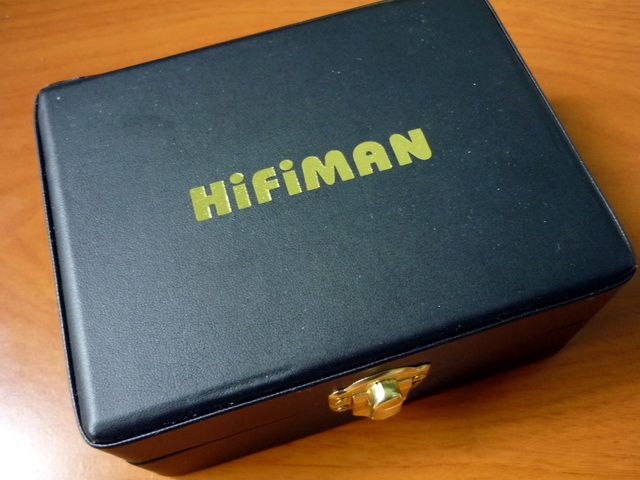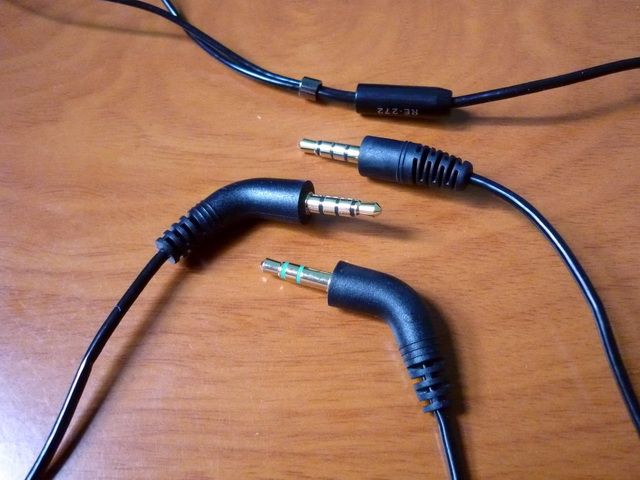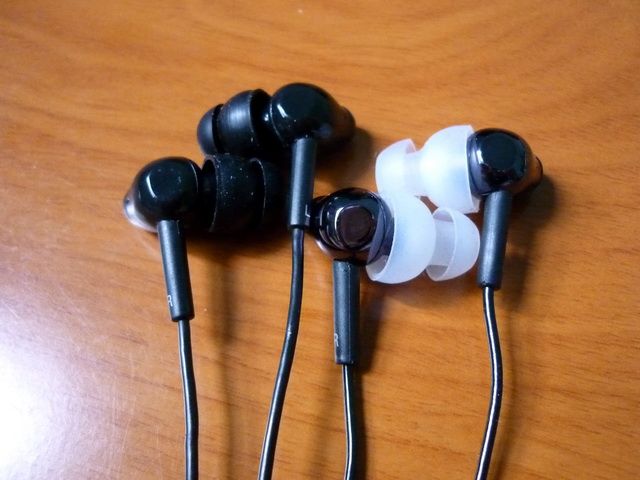

Spec
Driver: 9 mm Dynamic
Impedance: 20 Ohm
Sensitivity: 103 dB
Frequency Response: 15 Hz to 22K Hz
Packaging, Accessories and Build Quality
Packaging is never quite the game for HifiMan’s IEM. But with the RE272, it is quite a looker - at least in a geeky audiophile way. I think the box that house the RE272 is best described as the miniature version of the box for HifiMan flagship DAP, the HM801. It is great looking of course, and equally good for long term storage, but not quite portable if you need it to be. The solution? Just gets a hard case from eBay for less than $5 and you are all set.

Accessories wise, it is fairly standard for the RE series. You will get some spare filters, a shirt clip, three pairs of single flange eartips, a pair of big bi-flange and a pair of small bi-flange. What not so standard are the three extra extension cables. RE272 has a two-pieces cable design – the earpieces to the stereo plug is only about 75cm, while the extension cable is around 70cm. This adds to a total of 145cm. The reason to use a two-pieces cable design is HifiMan’s solution to avoid the extra adapter needed for the TRRS balanced plug used on RE272 (plus RE262 and RE-ZERO). The extension cable itself acts as the adapters, and all you need to do is to use the right extension cable for the jobs. One cable is for normal stereo source; another one is for balanced TRRS source (such as the HM801 with balanced amp module); the last one is the reversed normal plug – this is for those of you who want to wear the RE272 upside-down for over-the-ear style and don’t feel like listening to the wrong channel (right for left / left for right). This is really a smart and elegant move for HifiMan to address all the problems related to its earlier models with the TRRS plug and wearing style by simply giving the user their own choice of cable.

The different cable that allows RE272 to be used with balanced and single-end output.
Build quality wise, I think the RE272 is fairly solid. It is no secret that HifiMan old models are never quite stable on build quality. I have had my old RE0 for over 3 years now and it is still working fine (though I did recable it recently as the old cable has begun to harden after so many years of regular use). But on occasion you do find people complain about housing split on some batches due to weak glue issue. The new housing used on RE262 / RE272 is supposed to address this problem. It adds a rubber ring to hold the housing together and as far as I can tell, it is doing its job well. The difference between RE262 and RE272 housing is only on the outer finish. RE272 has a glossy finish that makes it look metallic in photo, but it is actual just plastic like RE262. As for cable, it is similar to that of the RE262 – thick but soft, and by far the best cable since the very first RE model.
Overall RE272 looks well build and well packed. For $250, I don’t think you can quite compare it to the name brand out there. But I have listened and reviewed the HifiMan IEM since their very first model back in 2008 and I can honestly say it is an evolution for both the company and its user. While it might not look quite as expensive as its price tag, it sure does sound expensive. HifiMan is never really a mainstream brand and it will likely to stay that way for now. While it does have its share of disadvantages as a small brand / outfit, there is no denying that HifiMan has earned its reputation as an audiophile orientated company in an extremely competitive market.

RE262 (left) vs. RE272 (right).
Sound Quality
The IEM has been given no less than 50 hours of burn-in before the auditioning. No significant change was detected after the burn-in.
The overall sound signature of RE272 is best described as the continuation and perfection of RE0, but it is not a simple ‘bettered-RE0’ at the same time. That is, those who love their RE0 might not immediately get what RE272 is about at the first listen, at least not without the right setup. While HifiMan has made a point in their RE272’s ads about its easy drivability of 32 ohm impedance and 103dB sensitivity, it will be foolish to ignore the potential of amping – perhaps ‘amping’ is the wrong word here. What I really meant to say is the potential of RE272 being balanced driven. Taking RE0 as an example – it is perfectly fine sounding without extra amping. But if you pair it with a decent amp, it will shine. Another example will be Etymotic ER4P – fine sounding by its own but transformed with a 75ohm adapter to the even better sounding ER4S. For RE272, amping is less important than how it is driven. But once you pair with it with a balanced source or amp, it will shine as well – and more so than any universal IEM that I have listened in a balanced or semi-balanced setup (via Meier Audio Corda StepDance and the Active Balanced Ground inside it). This however shouldn’t be too much of a surprise. After all, RE272 is tuned with balanced source in mind (*via HifiMan’s own HM801 with balanced amp module).
When not driven in balanced mode, RE272 has a sort of mid centric flavor in its overall neutral and analytical presentation. The vocal seems to have just a little more energy when compared to the rest of the spectrum. Bass is quick but quantitatively small. More importantly, the deepest end seems to be missing which causes the lower end texture to be lacking (or should I say ‘mildly decent’) – which is not something uncommon for most analytical sounding IEM and certain a trait shared by both RE0 and ER4P/S. The overly fast speed and short decay that make them good analytical IEM in the first place are often a curse for good texture. Being among the best analytical IEM in the market, RE272’detail retrieval can easily match up to Etymotic ER4S with treble extension that is almost as good as RE0 and soundstage much wider than both. If it is not for the slight mid forwardness that tends to hinder the overall clarity, it would have been the most impressive analytical IEM I have ever heard without the need of extra amping – and perhaps in many ways, it is really impressive as it is. However, the story of RE272 doesn’t quite end with that. There is something more to discover.
When I first plug RE272 into HM801 (with the balanced amp module installed), I know I am listening to a very special IEM. To be fair, I have listened to StepDance for a while now (which Active Balanced Ground provides similar effect as a true balanced setup) and the most IEM don’t seem to take the full advantage of it. Yes, they all sound better with StepDance, but they all sound really good on Meier Audio previous generation Corda 3MOVE as well – and I can’t say Stepdance is taking them to the next level. Well, not till RE272. Both (balanced) HM801 and StepDance do one incredible thing to RE272. They make RE272 sounds effortless, like taking an invisible barrier away from RE272 and expend the dynamic to multi-dimensions. Everything sounds more refined and layered, and most importantly, the slight mid forwardness is gone and the bass begins to show texture and depth. It is analytical but not excessively bright, warm yet remains mostly neutral, extends from one end of the frequency to another end without sounding lacking or overly done in any particular area, and has an impressive soundstage that isn't common to the analytical sound signature. It is as close to a perfect equilibrium as I can imagine, if there is such a thing in the IEM world.
Now, let’s take a step back. A 2StepDance (*StepDance successor) is almost $400; a HM801 with balanced amp module is over $1k. Neither is cheap option and certainly doesn’t make sense to buy a StepDance or HM801 just to pair it with RE272. The reverse however makes a lot of sense. If you already own either one of the two and are considering one of them, then RE272 makes a rather good choice for an incredible sounding universal IEM. For a less expensive option, the new iBasso T5 also pairs really well with RE272. Though not quite as good as balanced HM801 or StepDance, T5’s BTL grounding is still managed to deliver great result with RE272. It hasn’t driven it quite to the ‘effortless’ level, but still leap ahead of other sub$-200 portable amp I have tried as far as the whole synergy of the setup is concerned.
For those who prefer to listen to their IEM without a portable amp, don’t feel despaired. Even without a balanced setup, RE272 is still a great analytical IEM on its own. It is just the audiophile in me that wants me to believe balanced RE272 is what it supposed to sound like – and it is hard for me to go back to a regular setup once I have heard how good RE272 can be. Much like it is hard for me to listen to RE0 unamped or listen to ER4P when I can convert it to ER4S. It is a choice to get the best out of the rig regardless of cost, even if it is only for the last few %.

Verdict
I have a strong feeling that RE272 is the one IEM made for the purist – the technical listener who is obsessed with accuracy and detail. This is very much different from RE262 where it melts people’s heart with its smooth and musical presentation. Priced at $250, RE272 is $100 more expensive than RE262 and definitely not quite as attractive price wise. It does however belong to the top-tier group and arguably the best among universal IEM when paired with the right setup. While it won’t win award in the bang-for-buck category, it certainly doesn’t lack value either. For those who own a balanced setup or looking to own one, I’ll recommend RE272 as one of the ‘must try’ to showcase just how good the setup can be.
Check out The List for a numeric ranking.





